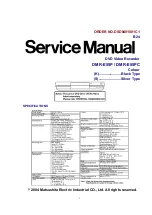
10
FIG. 12 – VOLTAGE
FOLLOWING CONNECTION
E. Main Speed Potentiometer –
The main speed potentiometer can be connected in several
ways using terminals “COM,” “+15,” “SIG” and “-15.” A 5K ohm potentiometer is supplied
with control. (A 10K potentiometer can also be used.)
(Warning! Terminals “COM,”
“+15,” “SIG” and “-15" are not isolated from AC line.)
Note: Jumper J5 must be in
the “15V” position.
i.
Unidirectional operation only –
Connect potentiometer to terminals “COM,” “+15,”
“SIG" for forward direction. To operate in reverse direction, connect to “COM,” “SIG,”
and “-15.” See fig. 10.
ii.
Bidirectional operation only –
Connect to terminals “COM,” “+15,” “SIG,” and “-15"
when using reversing contacts. To operate with a potentiometer, connect to “+15,"
“SIG,” and “-15." See fig. 11.
FIG. 10 – MAIN SPEED POTENTIOMETER CONNECTIONS (Unidirectional)
Forward
Reverse
FIG. 11 – MAIN SPEED POTENTIOMETER CONNECTIONS (Bidirectional)
Bidirectional with Reversing Contact
Bidirectional with Speed Pot
TB1
POTENTIOMETER
MAIN SPEED
+15V
SIG
-15V
COM
TACH
EN
*
MAIN SPEED
POTENTIOMETER
TB1
TACH
-15V
SIG +15V
COM
EN
*
*Note:
Arrow indicates increase in motor forward speed.
F. Voltage Following –
An
isolated
analog voltage can
be used in lieu of main speed potentiometer. Connect
signal to terminals “SIG" and “COM.” Note: Terminal
“COM" is common. A positive signal with respect to
terminal “RB1” will produce a positive output to motor.
A negative signal with respect to terminal “COM" will
produce a negative output. A 0 to ±10VDC is required
to operate control from 0 ± full output. (A bipolar
signal isolator, SI-4X [KB P/N 8801], is available as an
option from your distributor.) Note: Jumper J5 must be in the “10V” position.
Note: An
isolated signal voltage must be used or catastrophic failure can result.



































